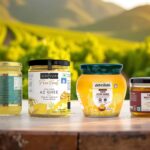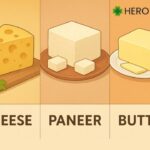Become the Healthiest, Happiest Version of Yourself — Naturally.
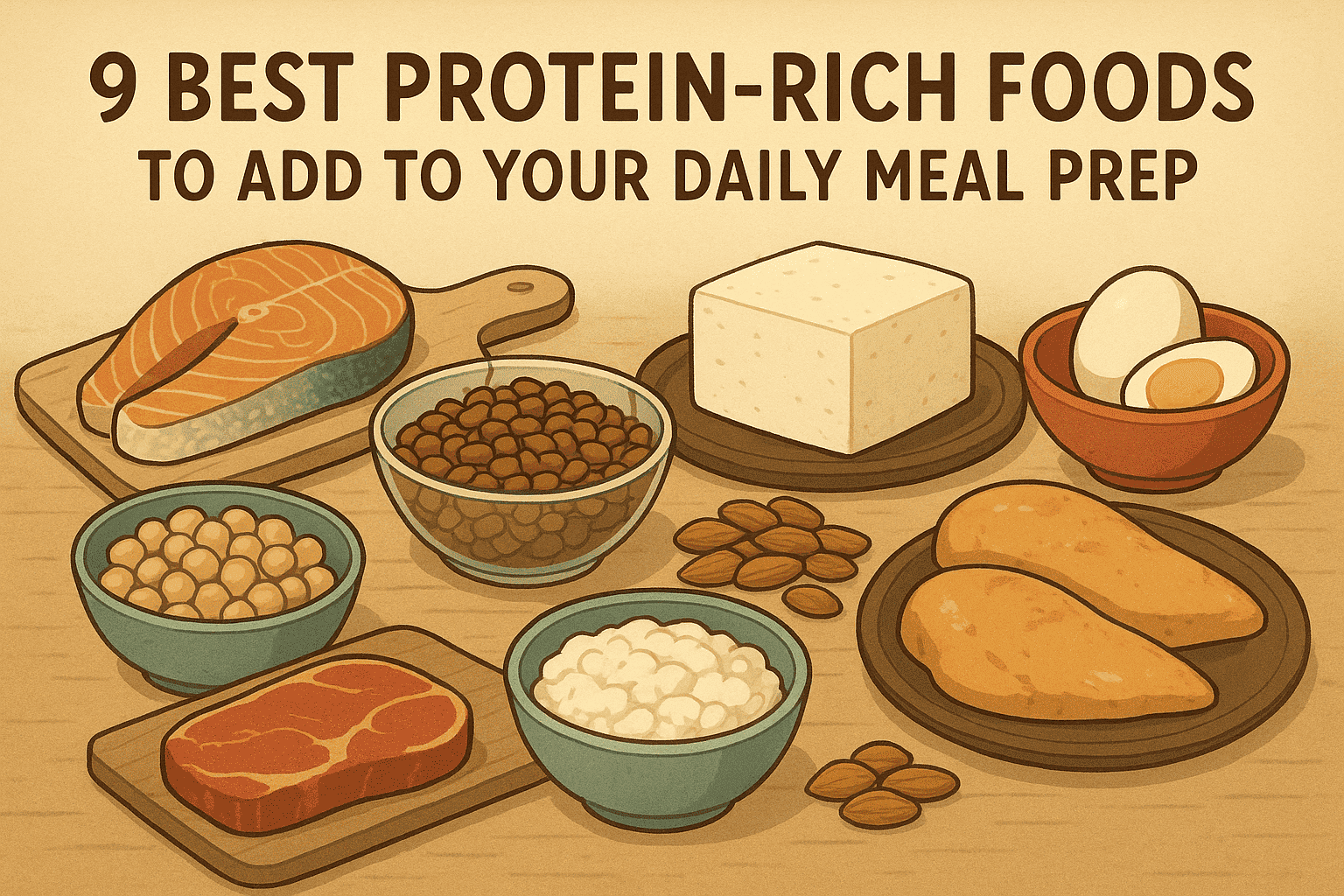
9 Best Protein-Rich Foods to Add to Your Daily Meal Prep
Protein is the cornerstone of a healthy diet, playing a critical role in muscle development, tissue repair, hormone regulation, and overall metabolic function. For those who are active, protein intake is even more crucial. The Recommended Dietary Allowance (RDA) suggests 0.8 grams of protein per kilogram of body weight daily for sedentary adults, while athletes or people engaging in regular physical activity may need 1.2–2.0 grams per kilogram. Without sufficient protein, the body struggles with recovery, energy balance, and even immune defense.
The Science Behind Protein in Meal Prep
From an expert lens, protein’s role extends beyond mere macronutrient status—it’s a metabolic modulator. A meta-analysis in the British Journal of Nutrition reviewed 24 studies and found high-protein diets (25-35% of calories) led to greater fat loss (an average of 0.79 kg more) and muscle preservation during calorie deficits. This is crucial for meal prep, as pre-portioned high-protein meals prevent impulsive choices, aligning with behavioral psychology principles like habit stacking.
Economically, meal prepping saves time and money; the USDA estimates home-cooked meals cost 50% less than eating out. Nutritionally, it ensures balanced intake—pairing proteins with fibers and fats stabilizes blood glucose, reducing diabetes risk by 15-20% per Harvard T.H. Chan School of Public Health findings. For athletes, timed protein intake (20-40g per meal) optimizes muscle protein synthesis, peaking 3-4 hours post-consumption.
Consider this comparative table of daily protein needs based on activity levels:
| Activity Level | Protein Recommendation (g/kg body weight) | Example for 70kg Person |
|---|---|---|
| Sedentary | 0.8-1.0 | 56-70g |
| Moderately Active | 1.2-1.6 | 84-112g |
| Highly Active/Athlete | 1.6-2.2 | 112-154g |
| Weight Loss Focus | 1.8-2.5 | 126-175g |
This data underscores why meal prep must prioritize quality sources to meet these thresholds efficiently.
Best Protein-Rich Foods For Your Body
1. Eggs – The Nutrient Powerhouse

Eggs are often referred to as “nature’s multivitamin” because they deliver a wide range of essential nutrients in a small, affordable package. One large egg contains around 6–7 grams of high-quality protein, making it an excellent food for daily meal prep.
Nutritional Facts (per large boiled egg):
- Calories: 70
- Protein: 6g
- Fat: 5g
- Carbohydrates: <1g
Benefits of Eggs
- Complete Protein Source – Eggs contain all nine essential amino acids, which the body cannot produce on its own. This makes them ideal for supporting muscle repair and growth.
- Supports Brain Health – Rich in choline, eggs play a vital role in neurotransmitter production and memory function. Pregnant women especially benefit, as choline supports fetal brain development.
- Promotes Eye Health – Eggs contain lutein and zeaxanthin, antioxidants that reduce the risk of cataracts and age-related macular degeneration.
- Weight Management – High in protein and healthy fats, eggs help you feel fuller for longer, reducing unnecessary snacking and aiding in weight control.
- Affordable and Accessible – Eggs are one of the most budget-friendly protein sources available globally.
How to Use Eggs in Meal Prep
- Boiled eggs for quick snacks or salad toppings.
- Scrambled or omelets with vegetables for a protein-packed breakfast.
- Egg muffins baked in bulk for easy grab-and-go meals.
- Deviled eggs as a healthy appetizer.
Pro Tip: Hard-boil a batch of eggs at the beginning of the week. They stay fresh in the refrigerator for up to 7 days, making them a convenient protein option at any time.
2. Chicken Breast – The Lean Protein Staple
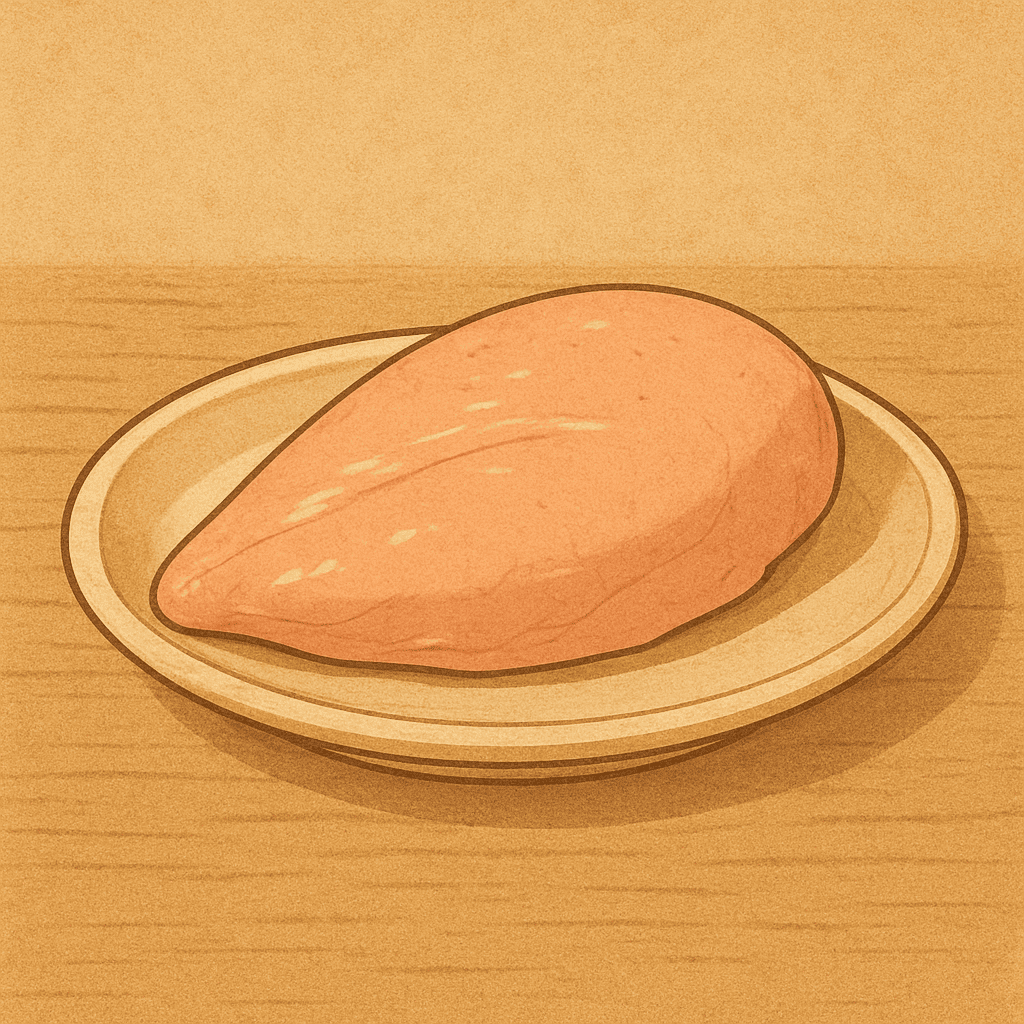
Chicken breast is arguably the most popular protein source for fitness enthusiasts and health-conscious individuals. It is lean, versatile, and packs a whopping 31 grams of protein per 100 grams while being low in calories and fat.
Nutritional Facts (per 100g skinless cooked chicken breast):
- Calories: 165
- Protein: 31g
- Fat: 3.6g
- Carbohydrates: 0g
Benefits of Chicken Breast
- Muscle Growth and Repair – High protein content makes chicken breast a go-to for athletes and gym-goers aiming for muscle hypertrophy and faster recovery.
- Low in Fat – Unlike red meats, chicken breast is low in saturated fat, making it heart-friendly and ideal for weight management.
- Rich in B Vitamins – Chicken provides niacin (Vitamin B3) and Vitamin B6, which are essential for energy metabolism and proper nervous system function.
- Boosts Immunity – The zinc and selenium in chicken breast play roles in immune defense and antioxidant protection.
- Versatile in Cooking – From grilling and baking to stir-frying and shredding, chicken breast can be used in countless meal prep recipes.
How to Use Chicken Breast in Meal Prep
- Grilled chicken with herbs for salads and wraps.
- Baked chicken breasts with lemon or garlic marinade for main meals.
- Shredded chicken for tacos, sandwiches, or pasta.
- Stir-fried chicken with vegetables for a balanced, quick dinner.
Pro Tip: Cook multiple chicken breasts at once with different seasonings—lemon pepper, teriyaki, or garlic herb. Store them in airtight containers, and you’ll have protein options ready for the week.
3. Lentils – The Plant-Based Protein Hero
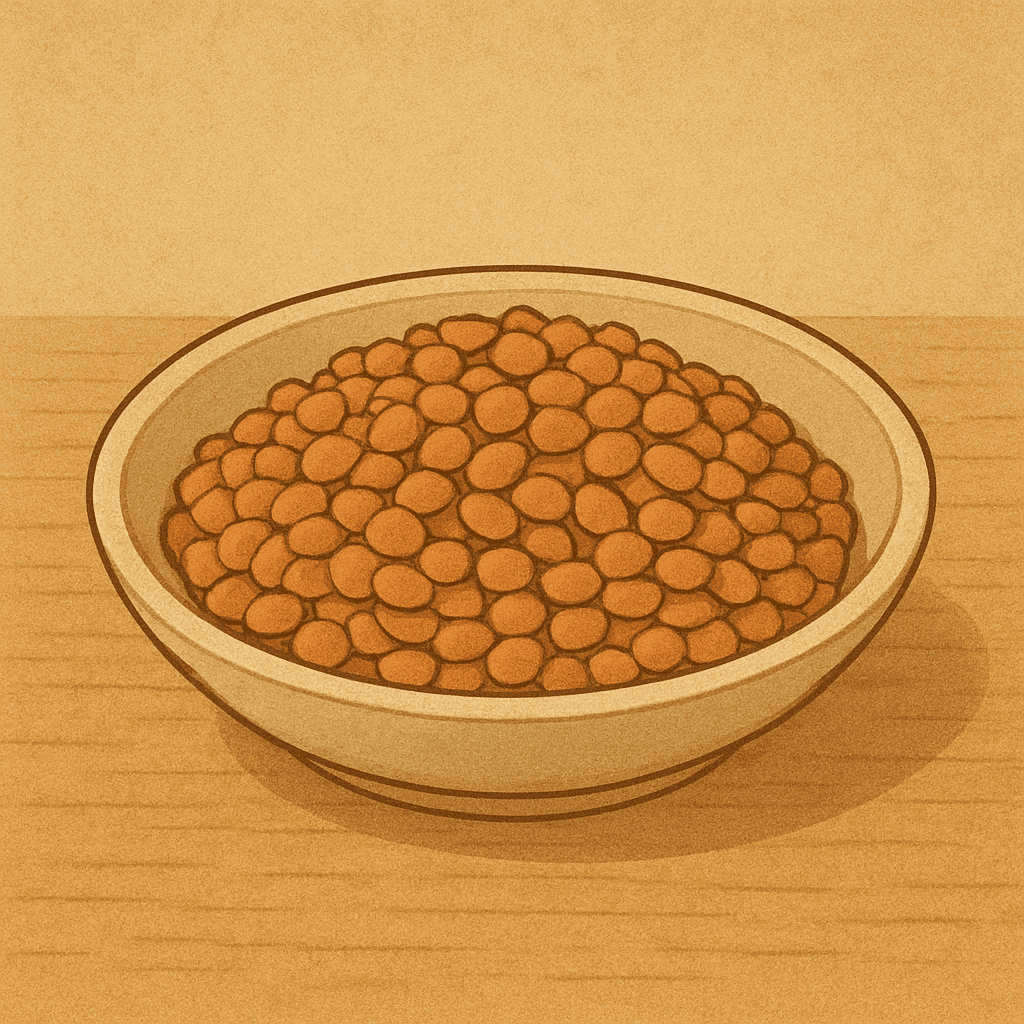
Lentils are one of the best plant-based protein sources, especially valued by vegetarians and vegans. Not only are they high in protein, but they also come with an impressive amount of fiber, vitamins, and minerals.
Nutritional Facts (per 1 cup cooked lentils):
- Calories: 230
- Protein: 18g
- Carbohydrates: 40g
- Fiber: 15g
- Fat: <1g
Benefits of Lentils
- Plant-Based Protein – With 18g per cup, lentils provide a hearty dose of protein to support muscle health for vegetarians and vegans.
- High Fiber Content – Keeps the digestive system healthy, supports weight control, and stabilizes blood sugar levels.
- Rich in Iron and Folate – Essential for oxygen transport and red blood cell production, making them vital for energy levels.
- Heart Health Support – Lentils contain soluble fiber that can help lower cholesterol and improve cardiovascular health.
- Budget-Friendly and Accessible – Lentils are inexpensive, store well, and can be found in most kitchens worldwide.
How to Use Lentils in Meal Prep
- Lentil soups and curries for hearty lunches.
- Lentil salads with chopped vegetables and herbs for refreshing high-protein meals.
- Lentil patties or burgers as a plant-based alternative to meat.
- Stewed lentils paired with brown rice or quinoa for a balanced meal.
Pro Tip: Cook a large batch of lentils and portion them into containers. They refrigerate well for 5–6 days and can be frozen for longer storage.
Also Read: What is A2 Ghee and its benefits?
4. Greek Yogurt – Creamy and Protein-Packed

Greek yogurt is a dairy product that stands out for its protein density. It is thicker than regular yogurt due to straining, which also reduces the sugar content while increasing protein.
Nutritional Facts (per 1 cup plain Greek yogurt, non-fat):
- Calories: 100
- Protein: 10g
- Carbohydrates: 6g
- Fat: 0g
Benefits of Greek Yogurt
- Protein-Rich Snack – Provides sustained energy and helps repair muscles after exercise.
- Supports Gut Health – Contains probiotics that balance gut bacteria and improve digestion.
- Bone Strength – Packed with calcium and potassium, essential for strong bones and muscle function.
- Weight Management – High protein with low calories makes it a filling snack option for those trying to control calorie intake.
- Versatility in Diet – Can be enjoyed sweet or savory, used in smoothies, as a dip, or as a healthier replacement for mayonnaise or sour cream.
How to Use Greek Yogurt in Meal Prep
- Breakfast bowls with fruits, nuts, and seeds.
- Smoothies blended with berries, spinach, or protein powder.
- Savory dips by mixing with herbs and spices.
- Dessert substitute for ice cream or pudding.
Pro Tip: Divide Greek yogurt into single-serving jars, topping with fruit or granola for a quick grab-and-go breakfast or snack.
5. Salmon – The Omega-3 Rich Protein
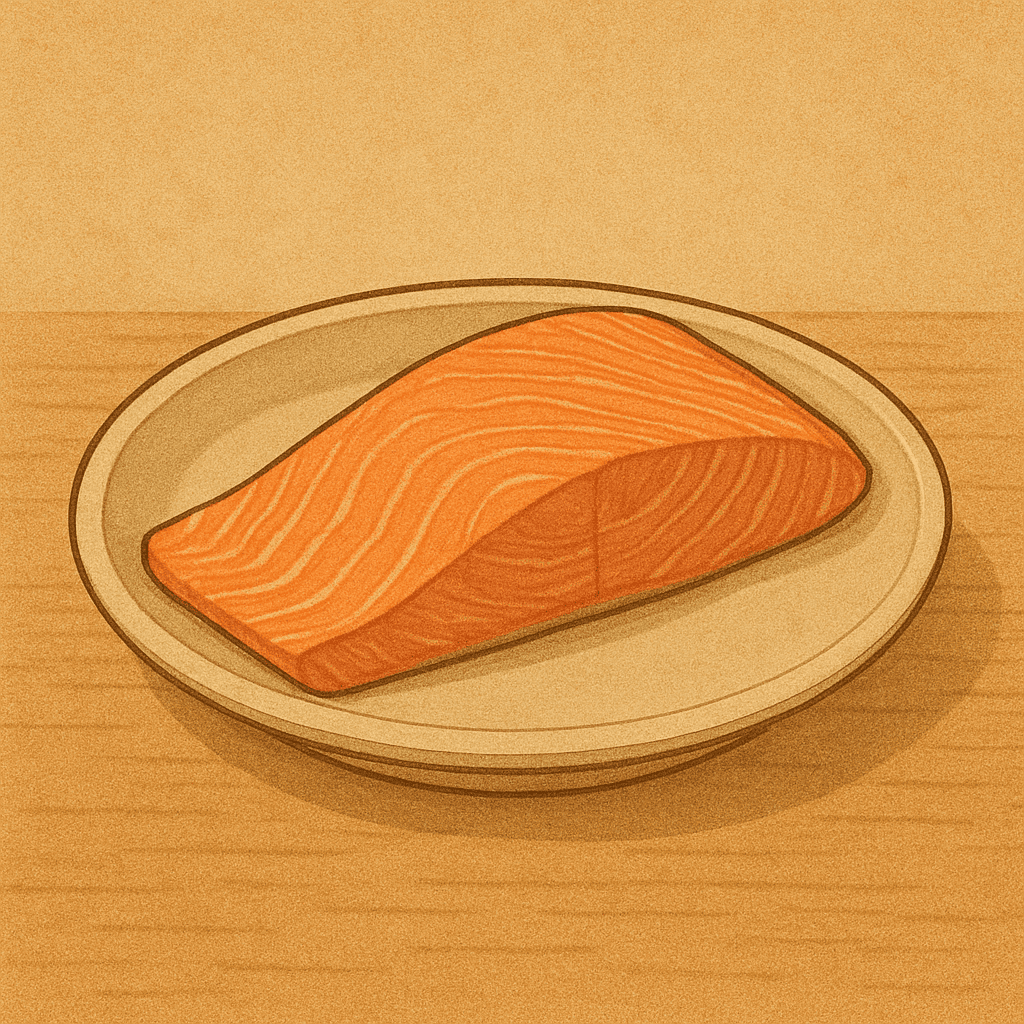
Salmon is a protein-rich fish that not only fuels your body with high-quality protein but also delivers omega-3 fatty acids (EPA and DHA), which are crucial for brain function, cardiovascular health, and reducing inflammation.
Nutritional Facts (per 100g cooked salmon):
- Calories: 208
- Protein: 20g
- Fat: 13g
- Carbohydrates: 0g
Benefits of Salmon
- Rich in Omega-3 Fatty Acids – These healthy fats improve heart health, reduce inflammation, and support brain function.
- High-Quality Protein – Provides all essential amino acids, aiding muscle recovery and repair.
- Supports Bone Health – Contains Vitamin D, which helps calcium absorption and strengthens bones.
- Boosts Skin and Hair Health – Omega-3s and protein promote glowing skin and strong hair.
- Improves Mental Well-Being – Research links omega-3 consumption with lower risks of depression and improved mood regulation.
How to Use Salmon in Meal Prep
- Grilled salmon fillets with lemon and herbs.
- Baked salmon with garlic butter or teriyaki glaze.
- Salmon bowls with quinoa, vegetables, and avocado.
- Salmon salads using cooked flakes for a protein-packed lunch.
Pro Tip: Bake multiple fillets at once and store them in airtight containers. Salmon pairs perfectly with brown rice, quinoa, or roasted vegetables for quick and balanced meal prep.
6. Tofu: Versatile Plant-Based Protein Staple
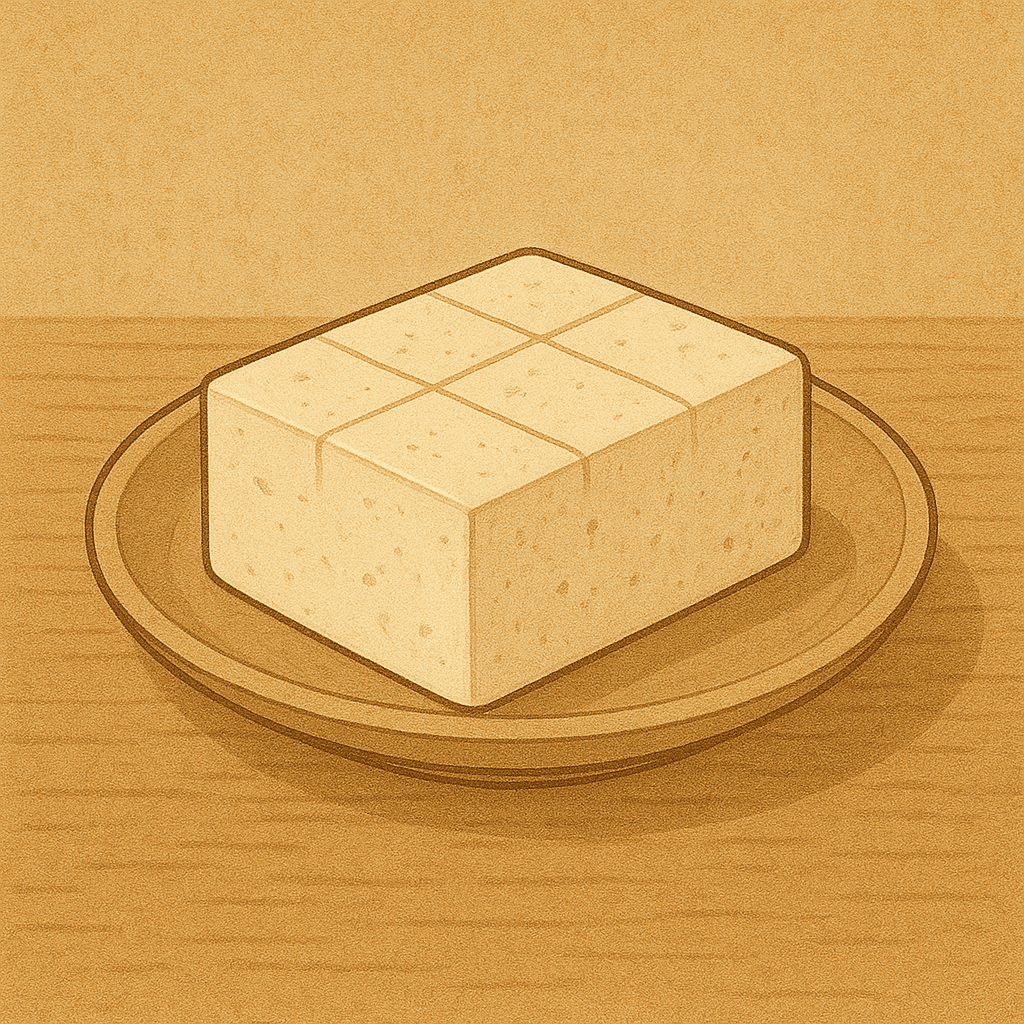
Tofu, a soy-based protein, offers 10-15 grams per 100g (depending on firmness) at 70-144 calories. As a complete protein, it’s a cornerstone for vegan meal prep, with a PDCAAS of 0.93.
Nutritional Profile
Tofu provides calcium (350mg, 35% DV in firm tofu), iron (2.7mg, 15% DV), and magnesium (30mg, 7% DV). Isoflavones, unique to soy, act as antioxidants. A 2025 Journal of Nutrition study found tofu’s amino acid profile supports muscle maintenance comparably to whey in plant-based diets.
Health Benefits
Tofu reduces LDL cholesterol by 5-10%, per a Nutrients review, lowering heart disease risk. Its phytoestrogens may alleviate menopausal symptoms, with 20% symptom reduction in trials. High in fiber (when unprocessed), it stabilizes blood sugar, benefiting diabetics. For weight management, tofu’s low calorie-to-protein ratio promotes satiety.
Integration into Meal Prep
Press firm tofu to remove water, then cube or slice. Marinate and bake at 400°F for 25 minutes. Stores 4-5 days refrigerated; freezes for 6 months.
Sample Recipes
- Tofu Stir-Fry Bowls: Toss with tamari, broccoli, and peppers (20g protein/bowl).
- BBQ Tofu Skewers: Grill with zucchini; pair with quinoa (25g protein/serving).
- Tofu Scramble Jars: Crumble with turmeric and spinach for breakfast (18g protein/jar).
Yield: 5-7 servings; prep time ~40 minutes.
Practical Notes
Choose organic, non-GMO tofu to avoid pesticide residues. Silken tofu works for smoothies, boosting protein by 10g/cup.
7. Black Beans: Fiber-Packed Legume Champion
Black beans deliver 15 grams of protein per cooked cup (172g) at 227 calories, making them an economical vegan protein at ~$1.20/lb dry.
Nutritional Profile
Rich in fiber (15g, 60% DV), folate (256mcg, 64% DV), and manganese (0.8mg, 35% DV), black beans are nutrient-dense. Their anthocyanins, antioxidants also found in berries, combat oxidative stress. A 2024 Food & Function study noted legumes like black beans enhance gut health via prebiotic fibers.
Health Benefits
Black beans lower blood pressure and improve insulin sensitivity, reducing diabetes risk by 20%, per Diabetes Care. Their fiber promotes satiety, cutting snack cravings by 18% in trials. For heart health, soluble fiber reduces LDL cholesterol by 8%. Protein supports muscle maintenance in plant-based diets.
Integration into Meal Prep
Cook 1lb dry beans (yields ~6 cups) in a pressure cooker for 25 minutes; store 5 days refrigerated or freeze. Rinse canned beans to reduce sodium by 40%.
Sample Recipes
- Black Bean Burrito Bowls: Combine with corn, salsa, and rice (22g protein/bowl).
- Spicy Black Bean Soup: Blend with tomatoes and chili (20g protein/cup).
- Black Bean Patties: Mash with oats and spices; bake for burgers (18g protein/patty).
Yield: 6-8 servings; prep time ~45 minutes.
Practical Notes
Soak dry beans overnight to cut cooking time by 20%. Pair with vitamin C-rich foods (e.g., peppers) to boost iron absorption by 30%.
8. Cottage Cheese: Creamy, High-Protein Dairy Star
Cottage cheese, a curd-based dairy, packs 11 grams of protein per 100g (low-fat) at 98 calories, with 80% casein for slow digestion.
Nutritional Profile
High in calcium (83mg, 8% DV), phosphorus (159mg, 23% DV), and B12 (0.4mcg, 17% DV), cottage cheese supports bone and blood health. A 2023 Journal of Dairy Science study highlights its leucine (1.3g/100g) for muscle synthesis.
Health Benefits
Casein’s slow release sustains fullness, reducing hunger by 25% versus whey in studies. It supports muscle recovery, with trials showing 10% faster repair post-exercise. Calcium aids bone density, crucial for aging populations, while B12 boosts energy metabolism.
Integration into Meal Prep
Choose low-fat, no-added-sodium varieties. Portion into containers with fruits or veggies; lasts 7-10 days refrigerated.
Sample Recipes
- Cottage Cheese Breakfast Bowls: Top with berries and chia seeds (25g protein/bowl).
- Savory Cottage Cheese Dip: Blend with herbs for veggie sticks (15g protein/serving).
- Cottage Cheese Stuffed Peppers: Mix with spinach and bake (20g protein/pepper).
9. Quinoa: The Plant-Based Complete Protein
Quinoa is a gluten-free pseudocereal that’s a complete protein, providing 8 grams per cooked cup. It’s ideal for vegetarians and vegans in meal prep.
Nutritional Profile
Rich in fiber, magnesium, iron, and antioxidants, quinoa supports heart health and provides sustained energy. One cup has 222 calories and 5 grams of fiber.
Health Benefits
It may lower chronic disease risk, aid weight loss, and stabilize blood sugar due to its low glycemic index. As a plant protein, it’s anti-inflammatory and gut-friendly.
How to Incorporate into Meal Prep
Cook a large batch and mix into salads or bowls. It absorbs flavors well and lasts five days refrigerated.
Sample Recipes
- Mediterranean Quinoa Bowl: With chickpeas, veggies, and feta for a protein-packed meal.
- Chicken Quinoa Meal Prep Bowls: Citrus-dressed with chicken for under 30 minutes.
- Jennifer Aniston’s Quinoa Salad: Herb-filled and nutrient-dense for easy prep.
Quinoa’s nutty flavor makes it a staple for diverse, healthy meals.
Expert Tips for High-Protein Meal Prep Mastery
Leverage these strategies:
- Plan macros: Use apps to track; aim for 25-30g/meal.
- Diversify sources: Rotate to cover amino acid spectra.
- Storage: Glass containers maintain freshness; label dates.
- Flavor hacks: Infuse with spices to boost adherence.
- Scaling: Prep for 3-4 days to minimize waste.
Table of Protein Content Comparison:
| Food (per 100g) | Protein (g) | Calories | Key Nutrient |
|---|---|---|---|
| Eggs | 13 | 143 | Choline |
| Chicken Breast | 31 | 165 | Niacin |
| Greek Yogurt | 10 | 59 | Probiotics |
| Salamon | 20 | 208 | Omega-3 |
| Lentils (cooked) | 9 | 116 | Folate |
Conclusion
Adding protein to your daily meal prep is not just about building muscle; it’s about fueling your body, supporting your metabolism, and staying fuller for longer. Eggs, chicken breast, lentils, Greek yogurt, and salmon stand out as some of the most powerful and accessible sources of protein. By integrating these into your meal prep, you’ll not only simplify your weekly nutrition but also take a giant step toward a healthier lifestyle.
Start small—prep two or three of these protein-rich foods this week. Over time, you’ll master the art of meal prep, save money, and achieve your fitness and wellness goals effortlessly.

